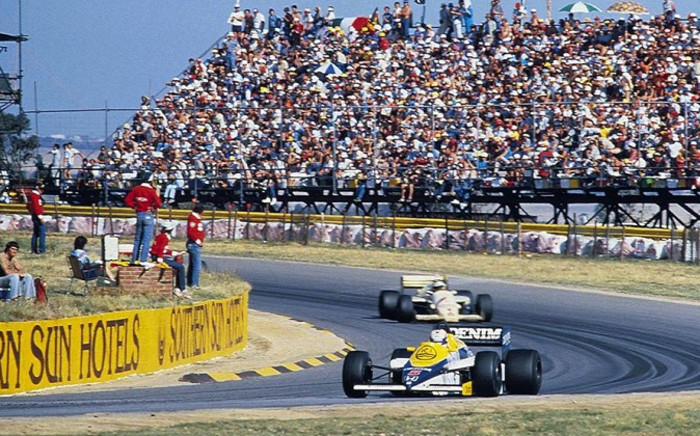
Over its decades-long history, Formula One has visited the world’s premier racetracks. From Britain to Spain and Italy to Japan, no stone looks to have been left unturned when it comes to location, which has meant that the F1 circus has visited some rather intriguing places. One such example is South Africa which has a particularly interesting history.
Despite not holding a race since the mid-nineties, South Africa still remains one of the more intriguing case studies for racing. South African Grand Prix racing began in 1934 when cars were powered by ludicrously high-capacity engines and the first real purpose-built circuits were coming into being. The likes of Brooklands in Weybridge, Surrey had been opened in 1907 and represented a Mecca for speed demons from across the world.
The following three decades would see automobile racing gaining a real foothold in the public consciousness. This was not only in Britain but across Europe with other places such as AVUS in Germany and Monza in Italy becoming key to the sport’s development.
As much as this kind of high-speed racing was interesting, it was only one side of the story when it came to the types of circuits utilised. The first instances of a South African Grand Prix in the pre-war age were first held on a 23.4km road course running through the coastal city of East London known as the Prince George. This was similar to European efforts such as Targa Florio and longer rallies like the Mille Miglia.
Drivers such as Bernd Rosemeyer, Luigi Villoresi, and Earl Howe all become key players in the early years of the South African Grand Prix. It was here when a purpose-built circuit was built that retained the traditional name, the Prince George Circuit. The first proper Formula One racing in South Africa would be held in 1962 and see Graham Hill take victory, having taken advantage of mechanical problems that plagued a young upstart called Jim Clark.
Following 1967, the South African Grand Prix would be held at the newly built Kyalami circuit that would see a whole host of action over its twenty-odd years of racing. For example, it was at Kyalami where Jim Clark broke Fangio’s record for most career wins in 1968. The following two years would see both a Jackie Stewart victory and also a win for a then forty-four-year-old Jack Brabham, marking his last ever one in the sport. 1975 saw Jody Scheckter take the victory and marks the only time when a South African native would win his home race. The 1981 iteration would see the Argentinian Carlos Reutemann take victory in the first non-championship race to be held since 1966.
With the current season’s calendar being finalised, South Africa is nowhere to be seen, but there are still some off-the-wall inclusions that buck the trend of previous years. A Portuguese GP returns for its first inclusion since 1996, and even then, it comes at a different circuit than before. The Portuguese Grand Prix had been previously held at Estoril, and is now being held at the Algarve International Circuit at Portimao.
It was here in the 2020 season where Lewis Hamilton beat Michael Schumacher’s long-standing all-time wins record. The current F1 betting odds from bet365 have the Englishman as a dead cert to win the title once again, with his current odds standing at 1/3 by comparison to his nearest competitors of Max Verstappen’s 5/1 and Mercedes teammate Valtteri Bottas’ standing at 9/1. This could mean that by the end of the season, Hamilton is the most decorated driver in the sport’s history.
The South African GP has often provided racing fans with some intriguing races and associated stories, so it’s a shame that it hasn’t been on the calendar for quite some time. However, as Portugal made a recent return, and the constant discussions on removing circuits that are perceived to be boring, like China’s circuit, maybe there’s potential for a return to South Africa. What a welcome one it would be.
